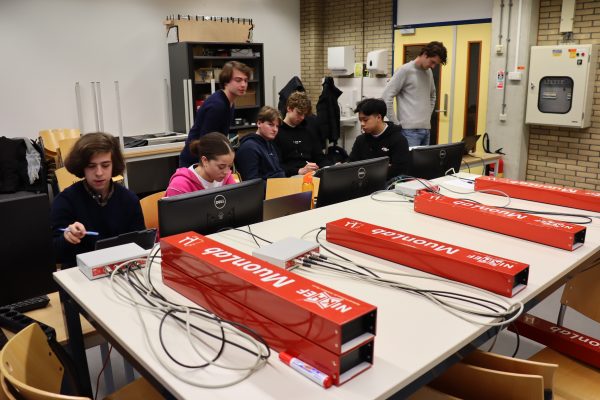National Institute for Subatomic Physics
Welcome to Nikhef. We are the Dutch National Institute for Subatomic Physics. Our institute performs research into the elementary building blocks of our Universe, their mutual forces and the structure of space and time.
Lees meer >>
Please note that some of the content on our homepage and further pages has not been translated into English yet.
What information are you looking for?
Recent news

Nikhef researcher Harm Schoorlemmer receives ERC Consolidator grant
The European Research Council (ERC) has awarded its 2024 Consolidator Grants to 328 researchers across Europe. These grants, totalling €678 million, aim to support outstanding scientists and scholars…

Extension of the International Agreement for the Pierre Auger Observatory
The Pierre Auger Observatory is the world-wide largest cosmic ray detector covering an area of 3000 km². It is operated by a collaboration of more than 400 scientists…

Nikhef researcher Bjarni Pont wins Auger Impact Award
Nikhef researcher Bjarni Pont, postdoc in the Cosmic Radiation (Auger) group is one of three people to have received the Auger Impact award this year. The Auger Impact…
Future events
Profielwerkstukken on 12 December



COLLOQUIUM “Future particle physics colliders with Energy Recovery Linacs” by Jorgen D’Hondt (Nikhef)
Featured


Nikhef researcher stars in opera about neutrinos

SURF host European quantumcomputer







